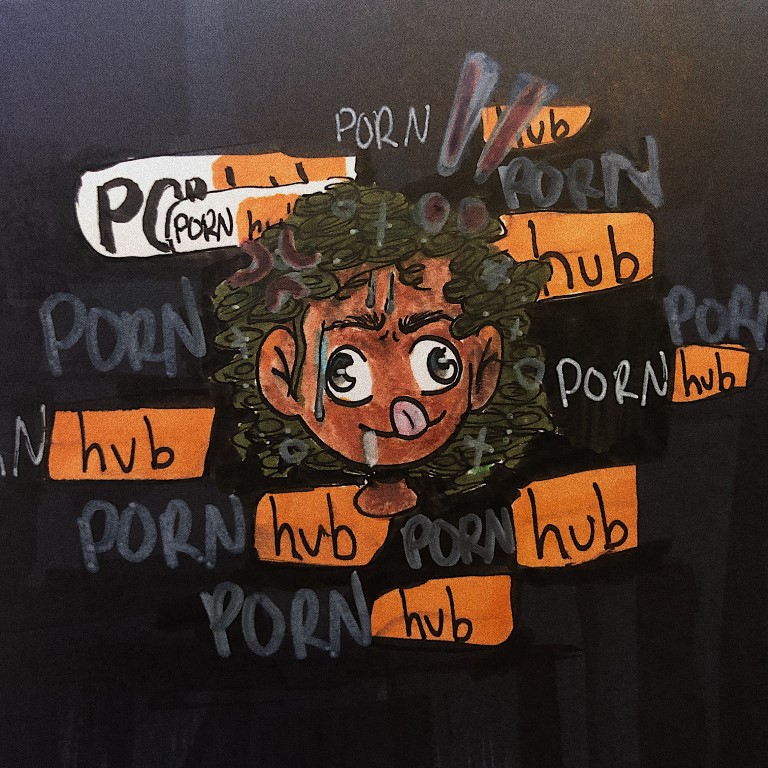
Can excessive free pleasure really be a boon?
By Matthew Fraser, Opinions Editor
Human sexuality is an undeniable drive that works in all of us. Even when people are forced into quarantine and social distancing the primal urge still needs to be sated. With the combination of financial stress and extreme boredom, the dopamine release of an orgasm becomes all the more enticing, yet with the shelter-in-place directive willing participants are harder to come by. For those who don’t live with their significant other but have a steady partner, the switch to sexting and/or digitally facilitated sex has been quick. But for promiscuous singles masturbation is the key to satisfaction; cue Pornhub making its premium subscription free to global users for the month of April. Without leaning on a puritanical view we should still consider what, if any, potential ramifications come from combining social isolation with prolonged porn usage. Can it all be so simple and still so good?
Porn aims to be a guilt-free way to access limitless sexual experiences with none of the intricacies, complexities, or risks of the real thing, but as the old adage goes, “if it’s too good to be true…” The problem with heavy porn usage is that it is sometimes tied not to high sex drive but to increased levels of social isolation and loneliness. Although the levels of people who report having watched pornography at any point in their lives are high (as well as in the past month) there has been a similar rise in people reporting severe levels of social isolation. A survey of 1,247 people yielded the data that would underpin Pornography Use and Loneliness: A Bidirectional Recursive Model and Pilot Investigation (Butler, Pereyra, Draper, Leonhardt, and Skinner, 2018); the group found that porn usage was a maladaptive attempt to alleviate loneliness wherein the temporary euphoria of sexual stimulation provided release from the melancholy of social isolation and lack of close connection. Butler and co. associated high levels of porn usage with disrupted attachment, and strained pair bonding, which they found to harm relationships. They connected the frequent sexual scripts consisting of eroticism, objectification, promiscuity, and misogyny all of which led to the impairment of secure attachment. Without secure attachment relationships cannot be built or maintained and the level of perceived or experienced loneliness increases.
In a time when everyone is encouraged to stay inside and peruse the internet, the much lauded “Netflix and chill” is no longer an option. Now, another video rises to the occasion. The scripts and settings employed by most porn studios and creators focus sexual pleasure almost exclusively on the male actor; this has led to a reported raise in unsafe sexual practices and misinformation about female sexuality. A study conducted by UCLA and the University of Copenhagen found that men with low levels of agreeableness to begin with showed worse attitudes towards women after watching porn (though normal men’s attitudes were unchanged). Add to this that porn often depicts female orgasms as resulting from exclusively penetrative sex, which does not correlate to real sexual encounters, and you’re left with a frequent refrain from both feminists and sex therapists: that porn neither teaches young men anything of use about sex nor does it empower young women to speak for their sexual needs.
What about the pleasure derived from orgasm? One would assume that at least that has value, but a sample of 1,500 adults (Personal Pornography Viewing and Sexual Satisfaction: A Quadratic Analysis — Wright, Bridges, Sun, Ezzell, and Johnson (2018) had zero instances in which porn usage was ever connected to increased sexual pleasure; in fact, it showed a correlation between decreased sexual pleasures and porn usage as infrequently as once-a-month. This connection could be related to the depictions of the sex acts themselves, the adherence to certain body stereotypes, or the underlying feelings and motivations of the user at the time of viewing. Although correlation is not causation, it seems fair to say that sexual dissatisfaction is related to increased porn usage.
Herein lies the conundrum of sexuality during enforced isolation. Hormones keep flowing and needs still need satisfying, yet we all should stay inside and avoid excessive contact. Though pornography has not panned out as the ultimate evil that many a traditional church-goer believes it to be, nor the rape training ground that many feminists predicted it to become, it is clear that porn is neither an adequate nor satisfactory substitute for real human-to-human kinship. Instead it is an imperfect and deeply flawed tool that can provide temporary pleasure at the risk of exacerbating the loneliness and isolation of the already vulnerable. Sexual interest is as natural as breathing, but there is no great substitute for the real thing.

